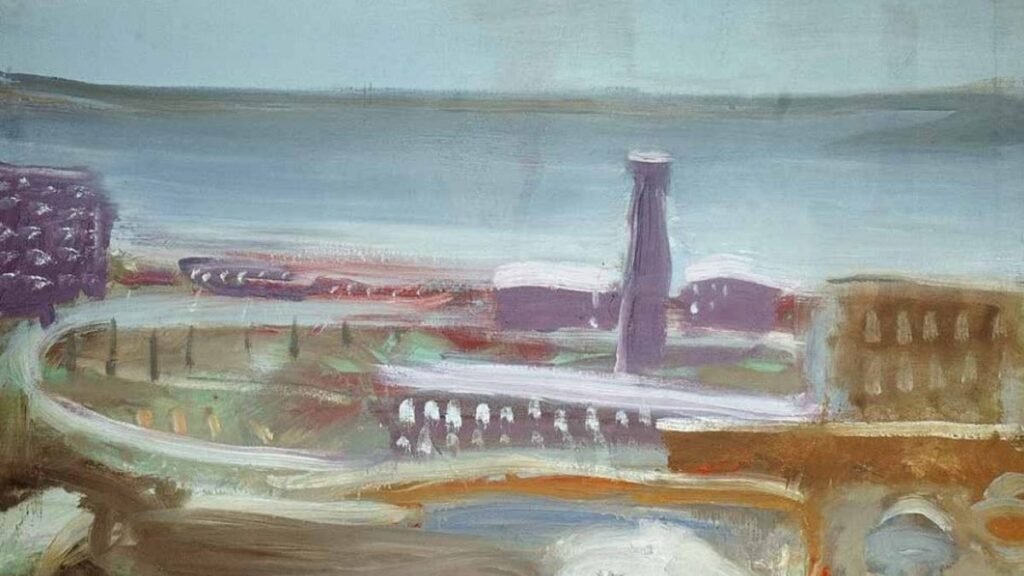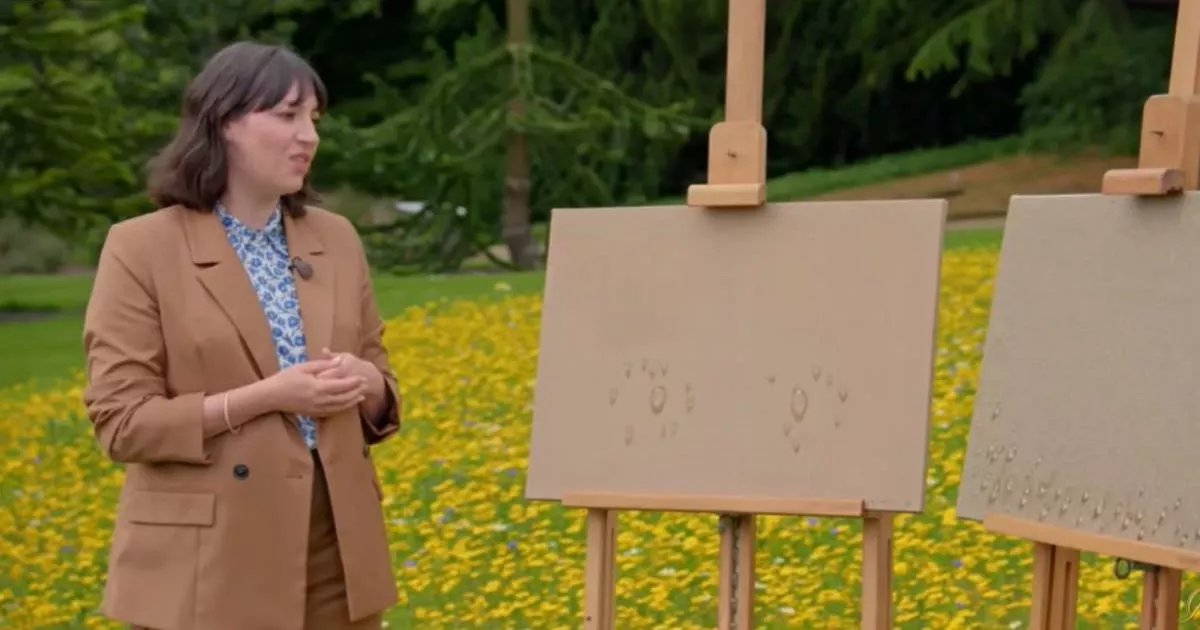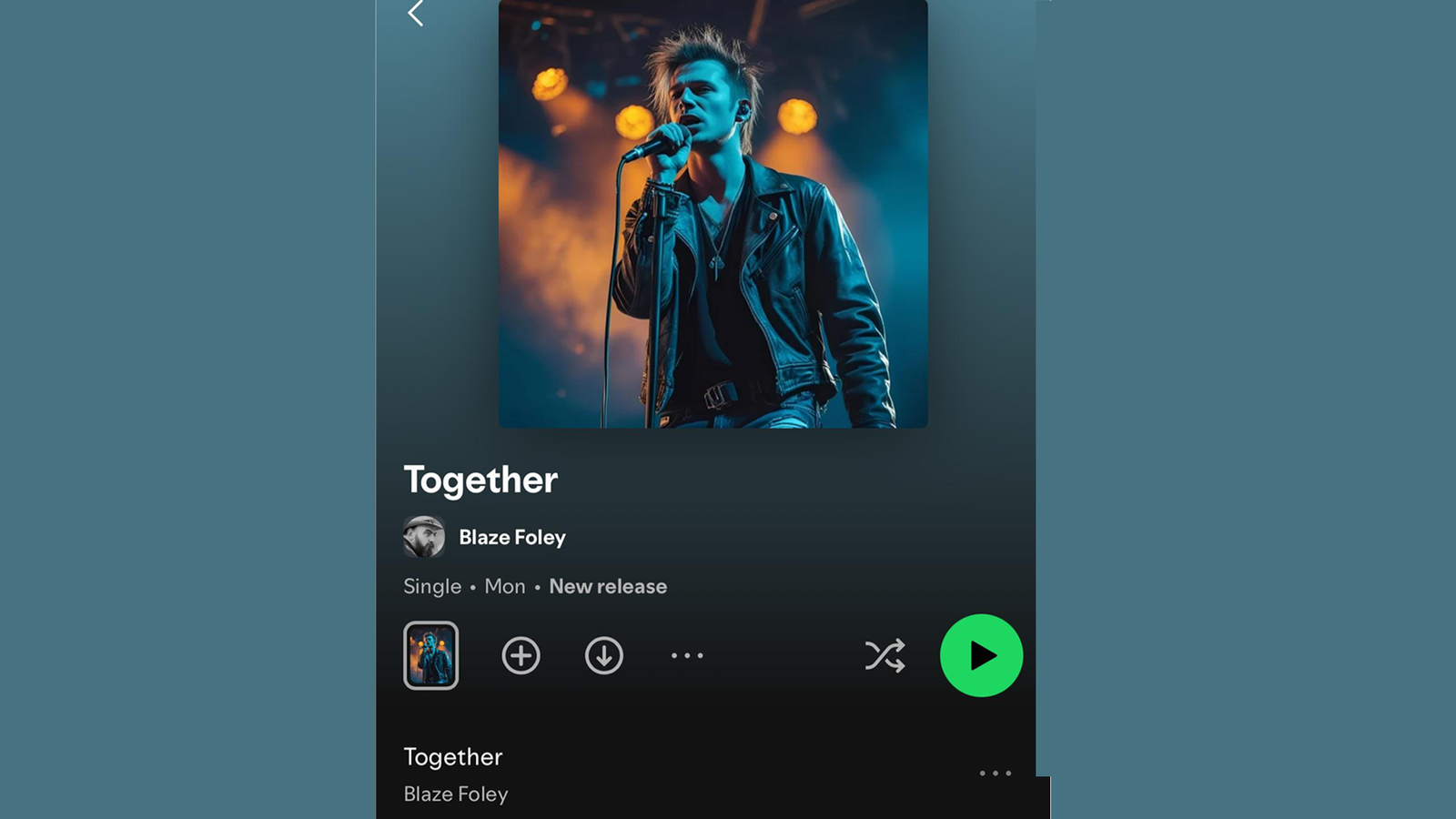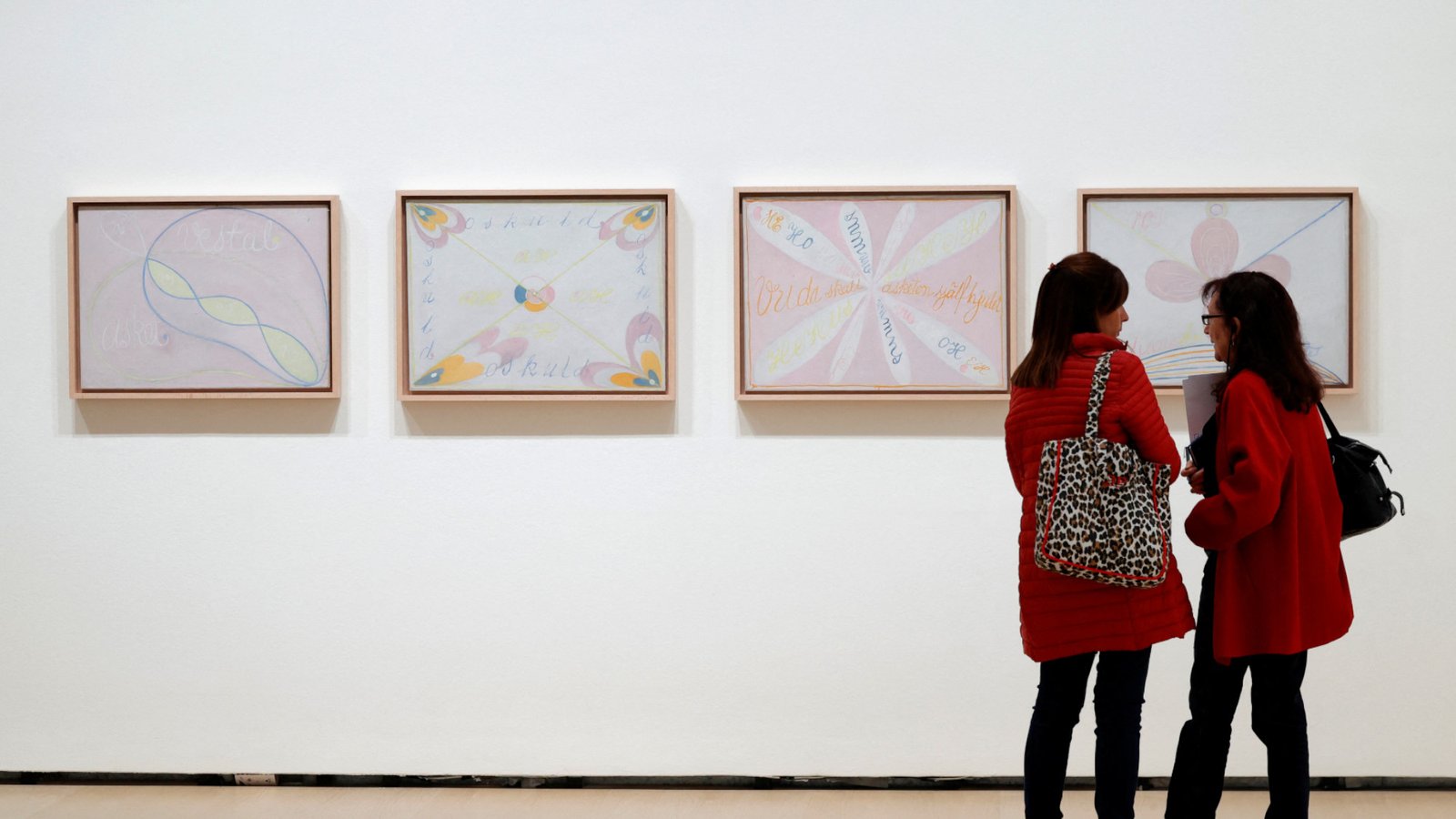TIVERTON — When Peter Strickman was a young man, searching for meaning and beauty in the world around him and capturing them on canvas, his college art teacher made a strange prediction.
He told Peter “I would leave the world in my thirties … imploring me to leave something behind for the world before leaving the world behind.”
Anyone would be unsettled by this. Peter took it as gospel. He spent his twenties — the late 1960s through the 1970s — producing literally hundreds of oil paintings of every imaginable subject. Peter created vibrant still-lifes, abstracts, nudes, portraits, landscapes of places around his native Fall River.
In his thirties, tormented by inner demons, he abruptly stopped oil painting, “fulfilling my teacher’s wishes,” he wrote.
Peter didn’t leave the physical world until he was 70 years old. But he left behind an immense body of striking artwork that spent decades in storage, unseen. His sister, Bonnie Strickman, is its caretaker.
Fifty of his paintings will be on view at Bristol Art Museum from June 8 to July 20, with an opening reception June 9. It’s a rare exhibition of works produced by a talented, unsung Fall River artist.
“I’m happy to be the archivist,” said Bonnie. “I just have to figure out how to get them out into the world, and create value for him as an artist and a unique human. I’m trying to honor him. He’s my brother.”
ArtWeek SouthCoast: Celebration returns with more than 50 events honoring local art and artists
Peter Strickman’s history in Fall River and how he was so prolific
The Strickmans lived for years at 525 Weetamoe St. Peter was the middle child of Leo and Marjorie, he a businessman in the paper and bookbinding industries and she a teacher at Somerset High School. They were Temple Beth El members and prominent in the theater community.
Bonnie, the youngest, said her older brothers Michael and Peter were both “brilliant — geniuses, actually.” Both her brothers attended B.M.C. Durfee High School but never finished, yet they were both intense and studious, gifted with languages, intellectual and well-read.
But Peter, she said, was special to her, kind and generous with the soul of a poet. As kids, he played guitar and she sang. “So he had the melody and I had to sing harmony,” she said.
Growing up, she would lure her dog Topsy into her bedroom with a piece of cheese and lock it in to smother it with love. “I tried to dress it up and try to make it wear clothes,” she said. “She’d whine and cry.
“Pete would leave his door open, incense burning, beautiful music wafting … and Topsy would just walk up the stairs and lie on his rug. And I was so jealous because my dog loved him better. But he was just open,” she said.
Years later, he captured Topsy lying on the rug, in ink on paper, for her birthday.
Peter had gotten his foundation in painting by Barbara Alpert of the Greater Fall River Art Association, and wanted more. He skipped his senior year at Durfee to study art at Marlboro College in southern Vermont, where he graduated in 1967 — and where teacher Frank Stout made his ominous prediction.
Peter became a working artist. Gallery curators loved his work, which has a spontaneous, loose feel with playful use of colors and broad, impressionistic brush strokes. He had numerous solo shows of his work — of which he generated a lot, constantly.
Promoting the arts: Six local artists received $2,000 grants from FRACC. This is how they’ll spend it.
When he returned to Fall River, he wrote later, “I would get up at three or four in the morning, meditate for a while, and drive to my very large studio downtown. I would prepare my materials, pack them into my little truck, and drive out to the beautiful countryside surrounding the city. I would set up and start painting just after sunrise.”
Bonnie said Peter often drove to Sakonnet Point in Little Compton and other points in Tiverton. Some of his paintings depict Fall River’s mill smokestacks with the Taunton River beyond.
Rather than categorize himself as one type of painter or another, “He called himself a ‘river artist,’” Bonnie said, drawn to the soothing flow of water that’s mirrored in the swirls of color on his canvases.
Peter was wildly prolific, painting everything — some paintings depict ordinary objects like fire extinguishers, bottles of pickles and ketchup, coat hangers — “experimenting,” Bonnie said. He sat his friends on chairs and couches and painted their portraits in exaggerated, slashing strokes, sometimes nude. Many of his paintings, he sold. Others, he gave away. Most, he kept and stored, and made more, more. He produced hundreds of works.
In his thirties, all the oil painting stopped. About it, he wrote simply, “That was the end of my professional work. … I retired to deep visionary spiritual life.”
Growing the city’s art scene: At Fall River museum and MIT art gallery, local artists collaborate by nature
Why Strickman stopped painting and what became of his work
Peter had been diagnosed with schizophrenia in his twenties, a mental illness characterized by periods of psychosis and breaks with reality. It often results in visual and auditory hallucinations. Bonnie said Peter heard voices. He turned to spirituality studies.
“It seemed like every religion was warring for his soul,” Bonnie said. “In a different culture, he might have been considered a mystic.”
He was hospitalized multiple times. The illness made it difficult for Peter to work the way he had — Bonnie said he believed he shouldn’t make graven images, and wanted to leave “painting and color permanently behind.”
Bonnie said when he was placed on powerful medication to treat his illness, it also sapped all remaining desire to paint in oils. He settled in Boston. She said he was a lover of life, making lifelong friends in elevators, and remained creative.
“He wrote spiritual biographies and poetry, and has published poems,” Bonnie said. “He was very brilliant — but a sweetheart.”
What was left of his vast art collection — paintings he hadn’t sold or given away — was stored in the basement of a family friend’s house for more than 20 years until, in their advanced years, they asked Bonnie to retrieve them.
“And then they became mine,” she said. “I have had them for a long time. While he was alive, he just didn’t want anything to do with them anymore.”
Bonnie is an artist in her own right. A former jazz singer in New York, she returned to the area and lived in Newport, Rhode Island for years. She stored her brother’s paintings in a van as she moved from house to house, eventually settling in Tiverton.
The walls of her home are decorated almost exclusively with her brother’s work. In upstairs rooms, dozens upon dozens of canvases are fitted on stretchers; others remain unstretched. She also maintains a collection of hundreds of scrolls of paper upon which Peter made zen-inspired ink paintings later in life, which he created only for himself as a spiritual practice.
On one wall is the last painting Peter created, which he made in 2003. It depicts what might be a landscape of mountains or trees — bold black angles in the foreground quickly receding into gray, as if in fog.
“It was for my mother,” Bonnie said. Their mother had had a stroke and was at Clifton Rehabilitation and Nursing Center in Somerset. “So he wrote on the back, ‘For mama, with all my love.’ He did one, and stopped. And that was it.”
‘I have got to get these paintings out into the world’
Peter died in 2017. Bonnie takes her role as custodian of his artistic legacy seriously. Before his death, she documented all his known surviving works, printed a catalog, and gifted a copy to him. It’s available to see online.
“I’m honored to be the steward. I just want to do the right thing,” she said. “He was extremely talented and unique, and I just want to honor him. Many people respond so strongly, positively, to these paintings.”
Among them is Nancy Whipple Grinnell, an author and curator emerita at Newport Art Museum, who has championed his work. She has shown Peter’s work in several of her shows, and is curating this latest show for the Bristol Art Museum, “Reflections of an Inner Life: The Art of Peter Strickman.”
The museum is at 10 Wardwell St., Bristol. Hours are Thursdays to Sundays, 1 to 4 p.m. A talk about Peter’s life, with Grinnell and others, will be held July 14 at 2 p.m.
Everywhere Bonnie travels through Greater Fall River, she said, she sees the landscapes her brother saw and painted.
“I feel like if I could paint, I would want them to look just like this,” she said. “They speak to me. And they’re of this area. He was so influenced by it.”
Her mission is to spread their beauty and keep her brother’s spirit alive.
“This has been a really interesting project. I feel like I have got to get these paintings out into the world.”
Dan Medeiros can be reached at dmedeiros@heraldnews.com. Support local journalism by purchasing a digital or print subscription to The Herald News today.






